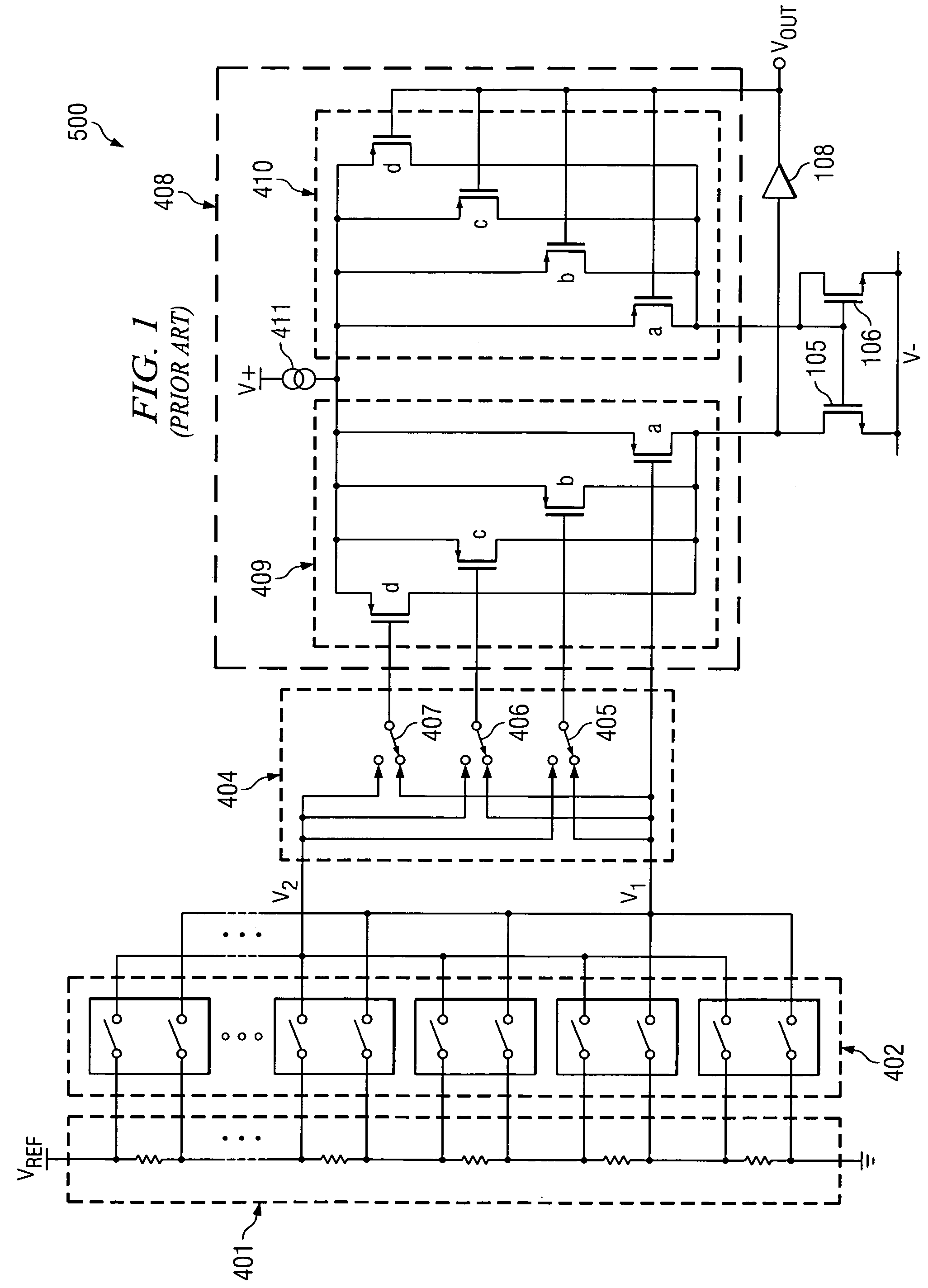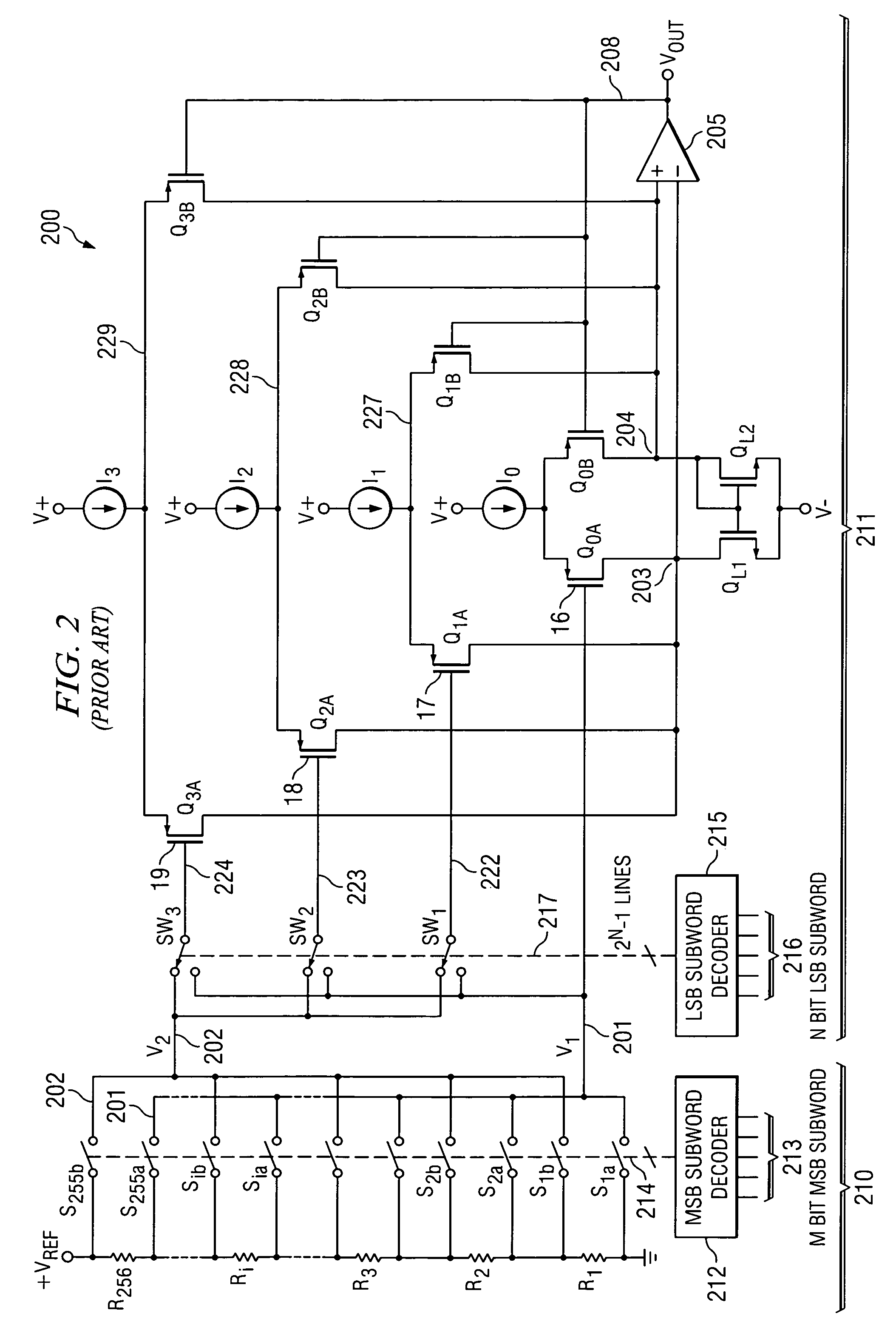High-speed, high-resolution voltage output digital-to-analog converter and method
a digital-to-analog converter and high-resolution technology, applied in digital-analog converters, analogue/digital conversion, instruments, etc., can solve the problems of precision voltage settling errors of dacs, loss of popularity of dac architecture for high-speed applications, and loss of dacs. high-speed, high-resolution output voltage settling
- Summary
- Abstract
- Description
- Claims
- Application Information
AI Technical Summary
Benefits of technology
Problems solved by technology
Method used
Image
Examples
Embodiment Construction
[0046]One embodiment of the invention provides a fast settling, low drift, monotonic DAC including a segmented 16-bit string DAC as a first stage which receives an MSB group of bits or MSB subword of the digital input word DIN, and also includes an interpolating amplifier as a second stage which receives a “mid-group” of the bits of the digital input word. The gate of at least one of the differential input transistor pairs of the interpolation amplifier is modulated by means of a delta-sigma modulator in response to an LSB group of the bits of the digital input word, in order to obtain very high resolution without significantly deteriorating output voltage settling time or output noise.
[0047]To achieve the desired high speed and precision output voltage settling, a very fast resistor string is provided to generate the tap voltages of the string resistor which has been selected in response to the MSB subword. For the “mid-bits” of the digital input word, an interpolation amplifier su...
PUM
 Login to View More
Login to View More Abstract
Description
Claims
Application Information
 Login to View More
Login to View More - R&D
- Intellectual Property
- Life Sciences
- Materials
- Tech Scout
- Unparalleled Data Quality
- Higher Quality Content
- 60% Fewer Hallucinations
Browse by: Latest US Patents, China's latest patents, Technical Efficacy Thesaurus, Application Domain, Technology Topic, Popular Technical Reports.
© 2025 PatSnap. All rights reserved.Legal|Privacy policy|Modern Slavery Act Transparency Statement|Sitemap|About US| Contact US: help@patsnap.com



